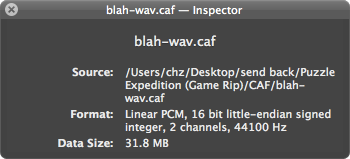Apparently I’m only going to update this blog while I’m on vacation.
So anyway, I’ve been in New Orleans since Tuesday. Great place. I’m so fat now (not really (but really))
We’ve been using the streetcar system a lot. Mostly the St. Charles line, since our hotel is on St. Charles Avenue.
When it runs along St. Charles, it runs along a median. Two tracks, one for each direction, divide the road into two halves. Coming into mid-town, when the streetcar crosses under the highway and into the Arts District, it moves into a lane of traffic. So cars can be in front of or behind it, it follows streetlights, and so on.
The streetcar goes one block up Howard Avenue before hanging a right onto Carondelet Street. Howard is a several-lane road, and the streetcar again uses the median to travel. It therefore crosses all of the other lanes as it turns, so there’s a sign on the righthand side of Howard saying to wait behind a certain point when the streetcar is turning.
We were riding the streetcar this morning. A car was one lane over to our right, trying to get past us.
It didn’t make it before we started turning. So it slowed down and stopped.
Then it tried to pull around us. That didn’t really work that well either.
It stopped. We turned a bit more. It moved a bit forward too. The world’s worst game of chicken was unfolding.
Finally, the car backed up a little bit.
Only so it could swing around more to get around the streetcar, which at that point was halfway into its lane.
So, my point is this: do not, under any circumstances, drive in New Orleans.
(You’re probably not any better off walking. When there is actually a crosswalk and a crossing light, half of the time the light is broken: I’ve seen multiple dead lights, one that never changed from Don’t Walk, and one where the Walk and Don’t Walk lights were on simultaneously.
The other half of the time, the light has an erratic Walk/Don’t Walk cycle that is completely different from any other light’s pattern. No two lights switch in relation to the traffic signals in exactly the same way. This evening I encountered one which indicated Walk while the traffic light in its direction was red. It stayed on Walk as the light changed to green.)






